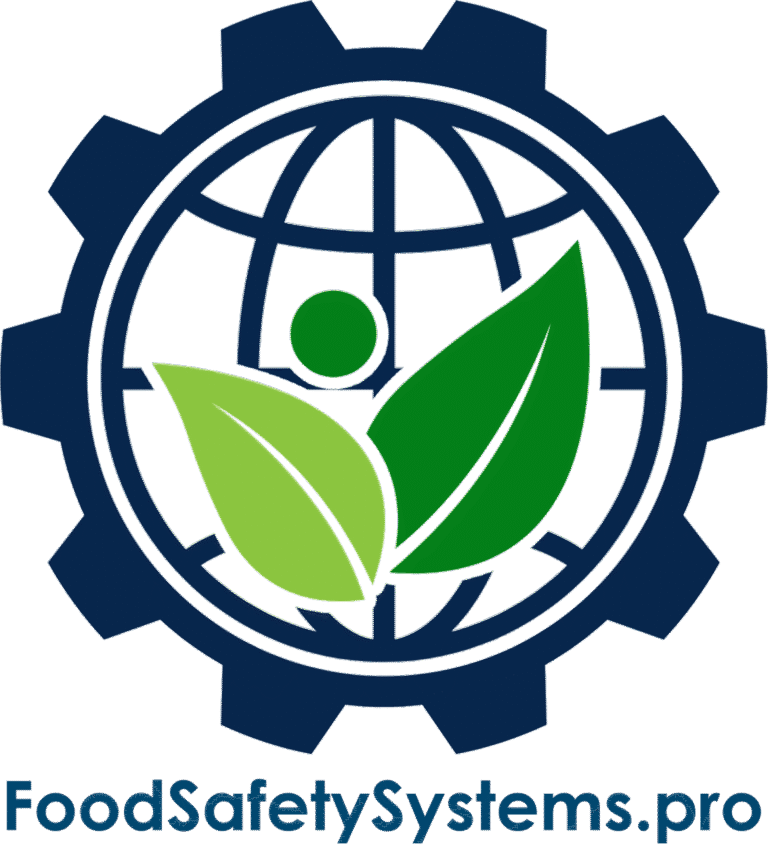Food Safety Training Program
Aligned with SQF Code Edition 9 – System Element 2.5.2
Requirement Overview
SQF Code Edition 9, System Element 2.5.2 mandates:
“Personnel shall receive training in food safety practices relevant to their job function, including GMPs, hygiene, allergen control, and other identified needs.”
This ensures all employees are equipped with the knowledge and skills required to maintain food safety and quality in their respective roles.
Disclaimer: Food Safety Systems is not affiliated with or endorsed by the Safe Quality Food Institute (SQFI). This resource is for educational and implementation support purposes only. Please visit www.sqfi.com for official documentation.

Key Compliance Objectives
-
✓ Deliver role-specific food safety training
✓ Verify and document employee competency
✓ Offer multilingual accessibility, where applicable
✓ Maintain an ongoing evaluation and improvement process
Step-by-Step Implementation Guide
1. Develop a Structured Training Program
-
Curriculum Areas and Frequency:
| Training Area | Key Topics | Recommended Frequency |
|---|---|---|
| Good Manufacturing Practices (GMPs) | Handwashing, PPE, personal hygiene | Annual |
| Hygiene | Illness reporting, uniforms, behavior | Annual |
| Allergen Control | Labeling, segregation, cleaning protocols | Biannual |
| Job-Specific Training | CCPs, sanitation, traceability | As required by role |
-
Evidence to Maintain:
-
• Documented training plan
• Topic-to-role matrix with frequency indicators
- • Documented training plan • Topic-to-role matrix with frequency indicators
2. Deliver Training Effectively
-
Suggested Delivery Methods:
-
• Onboarding: In-person instruction with live demos (3-hour minimum)
• Refresher Training: E-learning modules with quizzes and knowledge checks
• Critical Control Training: Hands-on demonstrations and supervised practice
• Multishift Operations: Recorded video training with comprehension assessments
Evidence to Maintain:
-
• Attendance sheets or LMS records
• Training completion certificates
• Course evaluations
- • Onboarding: In-person instruction with live demos (3-hour minimum) • Refresher Training: E-learning modules with quizzes and knowledge checks • Critical Control Training: Hands-on demonstrations and supervised practice • Multishift Operations: Recorded video training with comprehension assessments
- • Attendance sheets or LMS records • Training completion certificates • Course evaluations
3. Verify Employee Competency
-
Verification Techniques:
-
• Written Tests: Minimum passing score (e.g., 80%)
• Skills Demonstrations: Evaluator-led audits of practical application
• Behavioral Observation: GMP compliance monitoring during work shifts
Evidence to Maintain:
-
• Signed test results and skill assessments
• Observation logs and corrective action forms (if needed)
- • Written Tests: Minimum passing score (e.g., 80%) • Skills Demonstrations: Evaluator-led audits of practical application • Behavioral Observation: GMP compliance monitoring during work shifts
- • Signed test results and skill assessments • Observation logs and corrective action forms (if needed)
4. Monitor and Evaluate Program Effectiveness
-
Review Indicators:
-
• Completion rates per department or role
• Pre- vs. post-training audit results
• Incident frequency (before/after training cycles)
• Feedback from supervisors or trainees
Evidence to Maintain:
-
• Annual training program review summary
• Updates to content or delivery method
• Continuous improvement records
- • Completion rates per department or role • Pre- vs. post-training audit results • Incident frequency (before/after training cycles) • Feedback from supervisors or trainees
- • Annual training program review summary • Updates to content or delivery method • Continuous improvement records
Common Audit Findings & Recommended Fixes
Finding
Recommended Fix
Missing or incomplete records
Implement a digital training recordkeeping system
Generic training not role-based
Create department-specific modules with targeted content
No evidence of learning or skills
Add tests, observations, and sign-offs to verify knowledge
Language barriers in training
Provide content in preferred or native languages
| Finding | Recommended Fix |
|---|---|
| Missing or incomplete records | Implement a digital training recordkeeping system |
| Generic training not role-based | Create department-specific modules with targeted content |
| No evidence of learning or skills | Add tests, observations, and sign-offs to verify knowledge |
| Language barriers in training | Provide content in preferred or native languages |
Auditor’s Checklist for SQF System Element 2.5.2
Auditors may check:
-
• Training program documentation
• Employee records, tests, and certifications
• Multilingual access for diverse teams
• Staff interviews to verify understanding of key practices
Implementation Roadmap
Design Your Program
-
✓ Identify core training areas per department and job function
✓ Establish a training calendar by frequency and role
Deliver Training Effectively
-
✓ Schedule onboarding sessions
✓ Assign online modules for recurring refreshers
✓ Conduct instructor-led workshops where needed
Verify & Record Competency
-
✓ Use quizzes, checklists, and observations to confirm learning
✓ Retest or retrain as required
Evaluate and Optimize
-
✓ Track training KPIs (e.g., completion, test scores)
✓ Update materials based on incidents or audit outcomes
Why This Matters?
An effective food safety training program:
-
✓ Promotes a strong culture of food safety awareness
✓ Helps prevent contamination, recalls, and regulatory penalties
✓ Demonstrates your commitment to audit readiness
✓ Reduces errors, improves compliance, and protects brand integrity
Need Help Setting Up or Upgrading Your Training Program?
Food Safety Systems provides:
-
✓ Food safety training SOP templates and compliance checklists
✓ Role-specific curriculum design tools
✓ Multilingual training material development
✓ Digital recordkeeping and competency tracking solutions
Privacy Policy | Terms of Service | Disclaimer
Powered by Consultare Inc. Group, A Compliance Company







